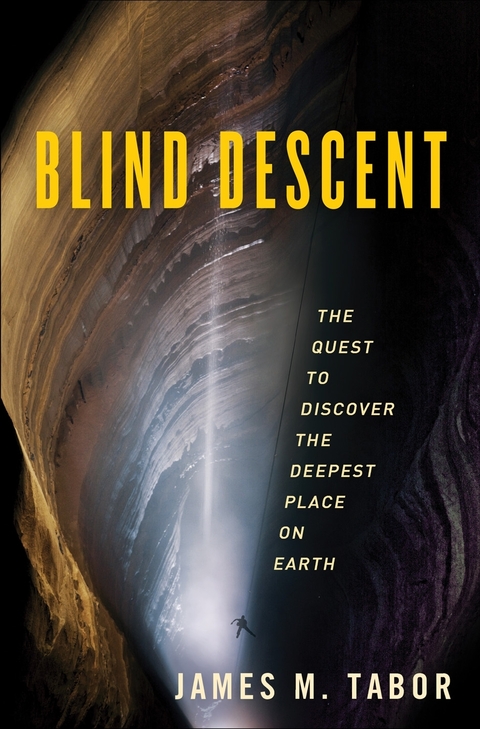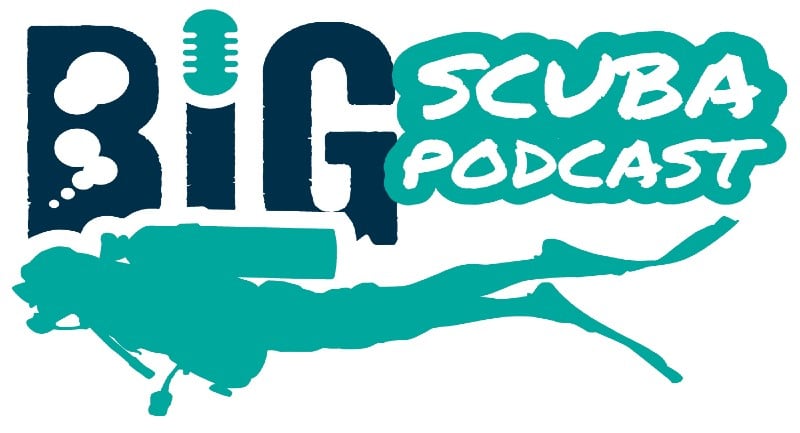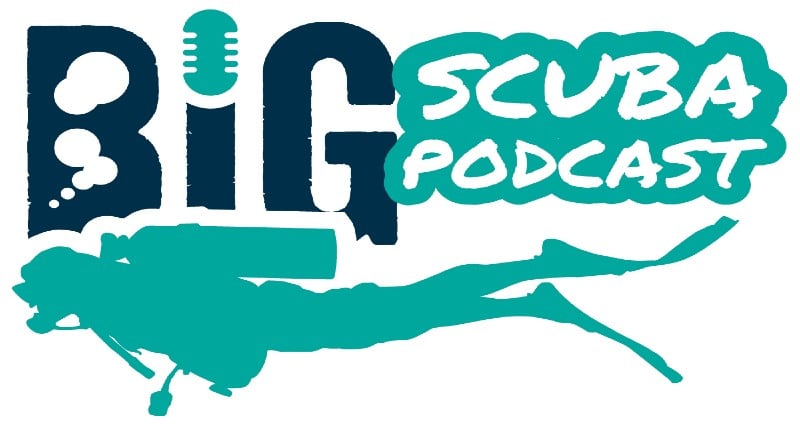Miscellaneous Blogs
Book Review: Blind Descent by James M. Tabor

Blind Descent by James M. Tabor takes the reader into the world of super caves, to perpetual night and the remarkable men and women who probe the depths as they seek to find the deepest place on earth. It is a world thousands of feet below the earth’s surface and miles from an exit. It is a world explored by slithering through passages that try to snag you, crawling along narrow ledges that may crumble beneath you, negotiating icy waterfalls and rivers that try to wash you away, ‘worming’ your way through delicately balanced boulders that could crush you, scaling vertical rock faces and diving through murky sumps and water filled passages – with no knowledge of what is on the other side.
If you think it is a peaceful place, think again, because Tabor describes how caves breathe as air moves through them. He explains how: “Little caves sigh. Big caves blow. Supercaves roar” (page 18), some like the noise of a jet engine! It is certainly not a world for the claustrophobic, the physically challenged nor the faint hearted.
 This true life account of the quest to discover the deepest place on earth revolves around two very different men, their different leadership styles, two very different super caves and years of energy sapping exploration. Bill Stone, an American engineer, is portrayed as an abrasive, impatient and physically imposing man who is driven, some would say obsessed, in his exploration of the Cheve super cave in Mexico and desire to have probed the deepest. To by-pass pools and sumps Stone designed an early rebreather that allowed him to explore underground waterways that had been barriers to his progress; waterways that were totally unforgiving. One particular quotation, whilst in another Mexican super cave, called Huautla, typifies his determination after decades of exploration: “This is my last chance, maybe my only chance. I’m going to push this cave to the bitter end. No matter what.” (p.126)
This true life account of the quest to discover the deepest place on earth revolves around two very different men, their different leadership styles, two very different super caves and years of energy sapping exploration. Bill Stone, an American engineer, is portrayed as an abrasive, impatient and physically imposing man who is driven, some would say obsessed, in his exploration of the Cheve super cave in Mexico and desire to have probed the deepest. To by-pass pools and sumps Stone designed an early rebreather that allowed him to explore underground waterways that had been barriers to his progress; waterways that were totally unforgiving. One particular quotation, whilst in another Mexican super cave, called Huautla, typifies his determination after decades of exploration: “This is my last chance, maybe my only chance. I’m going to push this cave to the bitter end. No matter what.” (p.126)
The other cave explorer, a Ukrainian scientist called Alexander Klimchouk, is described as mild, considerate and painstaking in his planning as well as the safety of his team. Although expedition leader he typically delegated many aspects of the exploration of the Krubera super cave in the Republic of Georgia, and subsequent achievement of key milestones, to others. His scientific publications, work in creating caving societies, track record in inviting groups from other countries to work with him and sharing the accolades bestowed illustrates his desire to be inclusive. However, the account of these separate quests reveals that neither leadership style is without its problems. Sometimes others pay the ultimate price for the demands they make. Tabor recounts the tragic deaths of cavers and cave divers in the comment: “Cave diving, by itself, is extravagantly dangerous, but recovering dead bodies from caves is even worse. For one thing, divers usually die not in benign places but in the more dangerous parts of caves”. (page 82)
As a recreational diver I find it difficult to imagine the challenge faced by Gennadiy Samokhim who performed a free dive, through a sump, at over 6,000 feet deep within the Krubera cave, with no knowledge of how far the sump extended, what snags were present and what lay at the other end. Similarly, those cave divers who man-handle their air tank along tight passages where: “It takes not much force at all to yank the mouthpiece from between your teeth, and if that happens, in what is almost certain to be zero visibility, your chances of finding it again before you drown are not so good.” (page 33) What is common in both accounts is the meticulous planning, physical endurance, commitment and bravery to probe… that extra few feet.
The Cheve super cave, at almost 5,000 feet deep, is described as having remarkable and beautiful features as captured in some of the colour photographs presented. Indeed, many of the descriptions of particular features like Giant’s Staircase, a boulder strewn ramp with a slope like an Olympic ski jump, a 100 foot cascade of water named Nightmare Falls and a clear aquamarine pool called Swim Gym reflect the variety and grandeur of the cave. However, at the end of an exploration Bill Stone likened: “…coming up out of Cheve to ascending El Capitan, (the famous rock climb in Yosemite National Park, USA) through a waterfall, at night.” (page 52)
In contrast Krubera, at over 7,000 feet deep, is described as: “an ugly cave, tight, wet, freezing and unrelentingly vertical” (p.226-227). Negotiating the ledges in Krubera was like: “crawling under your car (while half submerged in flowing water) for thousands of yards.” The water running through the system was just above zero centigrade.
Many of us will have strolled through floodlit tourist caves and grottos, protected by numerous health and safety walkways, for a few minutes. The explorers in Blind Decent spent weeks underground in energy sapping work and cold where the psychological demands are often as great as the physical. Claustrophobia, anxiety attacks, insomnia and hallucination were not uncommon. Indeed, a feature that sets Blind Descent apart from similar books is the exploration of the different psychological pressures the cavers faced as well as the personalities of Bill Stone, Alexander Klimchouk and of the impact of unrelenting toil and stress on their team members.
If I have a criticism of the book it would be in relation to the absence of simple illustrations depicting the main route through the super caves. The book does provide almost forty colour photographs, many providing spectacular images of caverns and waterfalls, passages and sumps. However, it is difficult to visualise the convoluted routes that the explorers followed and the position of key features between established camps. It is clear that the caves were surveyed with modern 3D technology. Simple diagrams of the route between one camp and another, one key feature and another would help the reader to place the discussion within the cave system.
Blind Descent will certainly give you an insight into the world of super caves and extreme cave diving; even if few of us follow.
- Blind Descent (2010) New York: Random House
- By James M. Tabor
- ISBN 978 1 4000 6767 1 286 pages
About James M. Tabor
James was born in Virginia. USA, raised in Connecticut and studied in Vermont where he now lives. He has published several books:
Forever on the Mountain (2007); The Deep Zone (2012); Lethal Expedition (2012); Frozen Solid (2013) and Antiques & Willmot (2014).
His writing has appeared in Reader’s Digest, Smithsonian, The Wall Street Journal and the Washington Post. He is a former contributing editor of Outside magazine and Ski magazine.
For a full list of his publications see www.jamesmtabor.com
Find out more about Professor Fred Lockwood, who is also a published author, at www.fredlockwood.co.uk.
Blogs
The BiG Scuba Podcast Episode 173: DEEP – Making Humans Aquatic

Gemma and Ian visited DEEP and were hosted by Phil Short, Research Diving, Training Lead, and were given a tour of the facility at Avonmouth and then over to the Campus at Tidenham.
DEEP is evolving how humans access, explore and inhabit underwater environments. Through flexible, modular and mobile subsea habitats that allow humans to live undersea up to 200m for up to 28 days, work-class submarines, and advanced human performance research, DEEP completely transforms what we are capable of underwater and how we conduct undersea science and research.
You can listen to Episode 173 of the BiG Scuba Podcast here.
We hope you have enjoyed this episode of The BiG Scuba Podcast. Please give us ★★★★★, leave a review, and tell your friends about us as each share and like makes a difference. Contact Gemma and Ian with your messages, ideas and feedback via The BiG Scuba Bat Phone +44 7810 005924 or use our social media platforms. To keep up to date with the latest news, follow us:
We are on Instagram @thebigscuba
We are on Facebook @thebigscuba
We are in LinkedIn https://www.linkedin.com/in/ian%F0%9F%A6%88-last-325b101b7/
The BiG Scuba Website www.thebigscuba.com
Amazon Store : https://www.amazon.co.uk/shop/thebigscuba
Visit https://www.patreon.com/thebigscubapodcast and subscribe – Super quick and easy to do and it makes a massive difference. Thank you.
Blogs
The BiG Scuba Podcast Episode 172: Dr. Joseph Dituri

Gemma and Ian chat to Dr. Joseph Dituri. Dr. Jospeh Dituri lived undersea for 100 Days in a mission combining education, ocean conservation research, and the study of the physiological and psychological effects of compression on the human body.
Dituri enlisted in the U.S. Navy in 1985. He served continuously on active service upon various ships and shore stations where he was involved in every aspect of diving and special operations work from saturation diving and deep submergence to submersible design and clearance diving. Now that he is retired from 28 years of active service to the United States, he is the president of the International Board of Undersea Medicine. He also volunteers his time as the CEO of the Association for Marine Exploration. He is an invited speaker on motivational, sea and space related topics.
Fuelled by his passion for exploration, discovery, adventure, and making the greatest possible positive contribution to the world, he is fighting for change in a big way and with great enthusiasm.
You can listen to Episode 172 of the BiG Scuba Podcast here.
We hope you have enjoyed this episode of The BiG Scuba Podcast. Please give us ★★★★★, leave a review, and tell your friends about us as each share and like makes a difference. Contact Gemma and Ian with your messages, ideas and feedback via The BiG Scuba Bat Phone +44 7810 005924 or use our social media platforms. To keep up to date with the latest news, follow us:
We are on Instagram @thebigscuba
We are on Facebook @thebigscuba
We are in LinkedIn https://www.linkedin.com/in/ian%F0%9F%A6%88-last-325b101b7/
The BiG Scuba Website www.thebigscuba.com
Amazon Store : https://www.amazon.co.uk/shop/thebigscuba
Visit https://www.patreon.com/thebigscubapodcast and subscribe – Super quick and easy to do and it makes a massive difference. Thank you.
-

 News3 months ago
News3 months agoHone your underwater photography skills with Alphamarine Photography at Red Sea Diving Safari in March
-

 News3 months ago
News3 months agoCapturing Critters in Lembeh Underwater Photography Workshop 2024: Event Roundup
-

 Marine Life & Conservation Blogs2 months ago
Marine Life & Conservation Blogs2 months agoCreature Feature: Swell Sharks
-

 Blogs2 months ago
Blogs2 months agoMurex Resorts: Passport to Paradise!
-

 Blogs2 months ago
Blogs2 months agoDiver Discovering Whale Skeletons Beneath Ice Judged World’s Best Underwater Photograph
-

 Gear Reviews3 months ago
Gear Reviews3 months agoGear Review: Oceanic+ Dive Housing for iPhone
-

 Marine Life & Conservation2 months ago
Marine Life & Conservation2 months agoSave the Manatee Club launches brand new webcams at Silver Springs State Park, Florida
-

 News3 months ago
News3 months agoWorld’s Best Underwater Photographers Unveil Breathtaking Images at World Shootout 2023
















